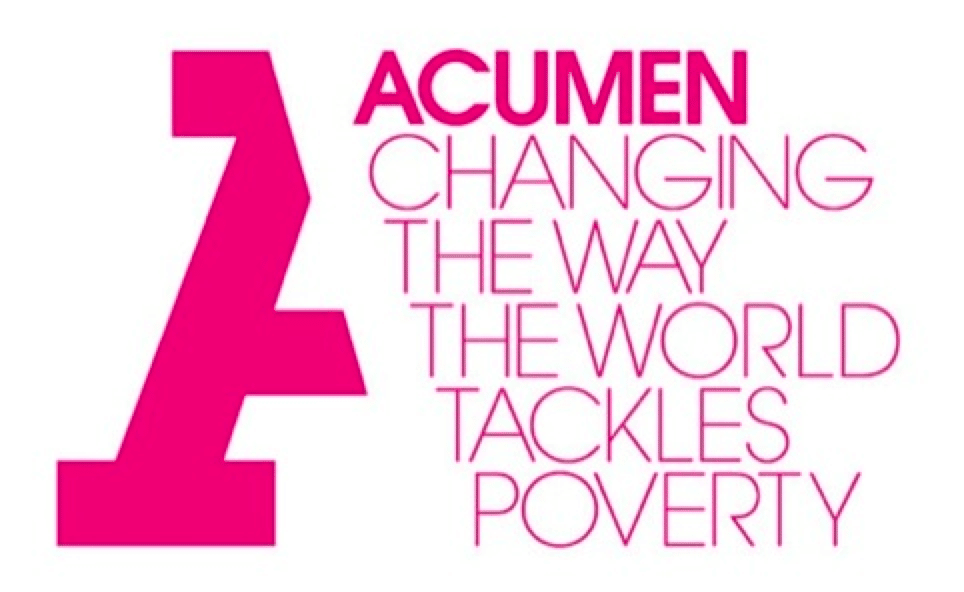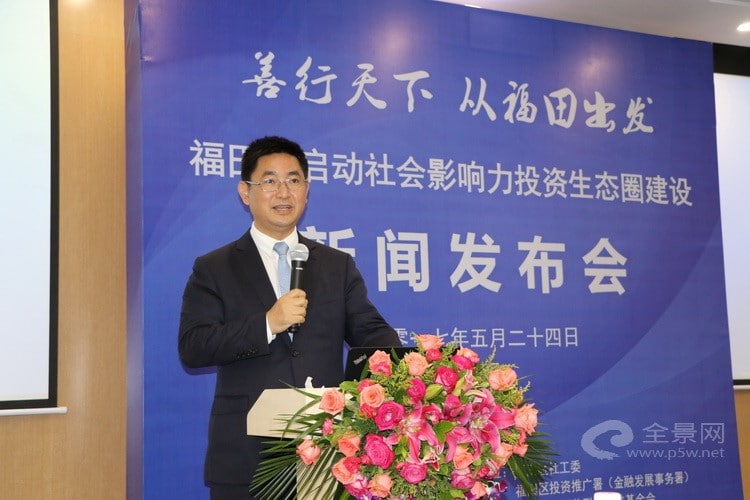The following article is a contribution from Explorer
“If impact investing is what we do, blended value is what we produce,” remarked impact investing scholars Jed Emerson and Antony Bugg-Levine.
Impact investing aims to produce positive and measurable social-environmental impacts while retaining financial returns, which dovetails with sustainable development goals (SDGs).
In 2015, the United Nations (UN) formulated 17 SDGs to address social, economic, and environmental concerns. According to the United Nations Trade and Development Organization, the annual funding for meeting SDGs in developing countries is approximately $2.5 trillion short of the amount needed.
When government funding and public welfare contributions alone cannot suffice, impact investing — a commercial approach to solving social and environmental problems, may alleviate financial pressures on the public sector in meeting SDGs.
Increased public awareness of poverty, inequality, and environmental protection, coupled with rising evidence supportive of investing in sustainable business models allow for the expansion of the impact investing market.
As of 2020, the Global Impact Investing Network (GIIN) estimated the market size of impact investing at $715 billion, while the International Finance Corporation (IFC) approximated this market size at around $2.3 trillion.
The status quo and challenges
Although impact investing commenced late in China compared to Western countries, advances were made in areas such as healthcare and financial services.
A prominent Chinese impact investing firm is Ehong Impact Capital, which mainly invests in agriculture, foodstuffs, medicare, and environmental protection.
According to Tang Ronghan, one of the founders of Ehong Impact Capital, “In 2012, there were nearly 200 million people over the age of 60 in China but the healthcare service market at that time was almost zero.”
In 2014, the impact investing firm invested 30 million yuan ($4.49 million) in Lvkang Medicare, which provides healthcare services to the disabled and elderly.
Four years after Ehong Impact Capital’s investment, Lvkang’s chain of medical care institutions increased from four to 15, and its hospital beds increased from approximately 600 to 10,000. During this time, 14 new home service outlets were established, covering around 100,000 elderly people living at home.
For incapacitated seniors, daily medical insurance costs at Lvkang range from 400 to 600 yuan, while the cost in a secondary hospital may total almost 1,600 yuan.
In 2016, Lvkang Medical Care completed its second round of financing, and it is currently the most significant medical and nursing institution serving the disabled in China.
Ehong Impact Capital also reaped the financial returns of this investment. As Lvkang Medical Care developed, the equity investment value of Ehong increased by five times.
Up until 2018, Ehong Impact Capital had invested in 30 projects, 16 of which passed the IPO or withdrew through mergers and acquisitions. The length of Ehong’s investment cycles average 6.2 years, and its annual net profits from investments amounted to 25.6 percent.
Another case in point is the Rise Fund, an impact investing fund under the Texas Pacific Group (TPG). One of the firms that the Rise Fund invested in was Chongho Bridge.
Chongho Bridge is a comprehensive farming assistance institution that focuses on providing micro-loan services to rural customers. As one of China’s most successful micro-loan institutions, Chongho Bridge has expanded its services to more than 400 poverty-stricken counties in China. By 2020, the organization had loaned 67.6 billion yuan, lending 29,000 yuan on average to each household. The company has provided financial services for more than 6 million rural households, while its overall repayment rate stands at 99.5 percent.
Since Chongho Bridge generated a positive social impact, it was favored by many shareholders, including the Rise Fund, Shanghai Yunxin Venture Capital Co Ltd, China Foundation for Poverty Alleviation, the International Finance Corporation (IFC), and the Sequoia Capital China Fund. In 2021, Chongho Bridge aggregated 1 billion yuan in its latest round of financing, which was led by the OTPP and followed by ABC World Asia.
While impact investing is already starting to pay off in some sectors, it still needs to overcome certain obstacles.
In China, the impact investing market remains in its initial stage of development. The industrial chain that supports impact investing, including investment management companies, financing consultants, third-party evaluation agencies, social enterprise incubators, social enterprise listing, and trading markets, is yet to be completed. The investment and financing channels of impact investing entities need to be expanded by multiple means such as funds and financial instruments, including trusts and bonds. However, it is difficult for impact investing firms to avail themselves of all these financial tools.
Trusts under Chinese Charity Law and Trust Law pose legal obstacles to practicing impact investing. The Charity Law in China places restrictions on charitable trust’s activities. Meanwhile, the investor must be a for-profit business entity and not a social organization.
Because the use of charitable trusts for impact investing may go against the charitable ideal, it is not that easy to use charitable funds for Chinese impact investing projects.
Other financial tools include social impact bonds (SIBs). Social impact bonds are a kind of financial security that provide capital for the public sector to fund projects that will create better social outcomes and generate savings. Whether the design purpose of the social impact bond can be applied to the contemporary social and legal environment in China and achieve the expected effect still need further investigation on the objective, operation, and evaluation to determine their compatibility with China’s legal milieu.
On top of deficiencies in investment channels, there are currently too few good impact investing projects in China, and the country lacks professional social organizations to invest in.
In the past, China was dominated by governmental organizations. Non-governmental organizations voluntarily initiated and operated by the people developed gradually after the Reform and Opening-up. Since domestic social organizations have developed for only a short time, many practitioners have never been professionally educated in philanthropy.
Even though China has many potential areas for development, it lacks mature social organizations to invest in. When more professional social organizations emerge, foundations will have more options and turn to venture philanthropy and impact investing.
“We hope to find many excellent social organizations and ensure they are working on a high-quality project so that Ai You will give them funds. But at this stage, social organizations have not attained this level,” said Zhigang Cong, Secretary-General of Ai You Foundation.
Even current impact investing projects may deviate from their goals in operation and fail. Though certain social organizations are considered competent in their early stages of development, founders may sacrifice social value for financing in the organization’s development process. As a result, social enterprises stray from their original social purposes, leading to the exit of impact investors and the conversion of the organization into a general profit-making business.
International experiences
Globally, there are more financing channels for impact investing, including bonds, insurance, trusts, and other financial instruments.
The UK issued the world’s first social impact bond (SIB) to reduce recidivism in the city of Peterborough. The final 8 million pounds ($9.82 million) raised provided criminals with employment opportunities, counseling, and help with alcohol and drug problems. As a result, the city’s recidivist rate fell by 9 percent, and investors received an annualized return of more than 3 percent on their investment.

There are many benefits to this novel approach to financing. SIB can enable multiple platforms to cooperate, combine different expertise, and finance projects under complete evaluation. Payment and investment methods for SIBs are flexible, and most importantly, both investors and executors will attach importance to the output. To date, SIBs have addressed various issues such as recidivism, homelessness, mental health, youth unemployment, and childcare.
Impact investing firms can access abundant financing channels internationally. In addition, some countries have issued laws to regulate the rapid development of social impact bonds. The US Senate passed the Social Impact Cooperation Act in 2015, the UK promulgated the Social Investment Tax Relief Policy in 2014, and Canada passed its Economic Action Plan in 2012. A comprehensive legal system can effectively supervise impact investing firms.
Presently, the market scale of impact investing is gradually expanding in major developed countries, and the fields involved in impact investing are also more extensive. Many excellent global impact investing companies have generated social benefits in different fields.
Founded in 2001, Acumen Fund is a pioneer in impact investing and one of the most successful impact investing foundations. Water, health, energy, housing, agriculture, and education are among the six cardinal fields addressed by Acumen Fund’s investment portfolio. Geographically, its investments are concentrated in South Asia and East Africa.
Acumen Fund invests between $30,000 and $2.5 million at a time, in the form of loans or equity, with the expectation that the loan will be recovered or that the equity will be sold after seven to 10 years.
LeapFrog Investments Inc is another mature global impact investing firm that was founded by Andy Cooper in January 2007. It invests primarily in health insurance and financial services for low-income groups in Asia and Africa.
The firm has invested in businesses such as fintech firm BIMA, which provides services such as mobile insurance to 37 million low-income customers in Asia, Africa, and Latin America. LeapFrog has also invested in Goodlife, Africa’s most crucial drug chain and healthcare provider. In addition, LeapFrog focuses on obesity and has invested in HealthifyMe to provide fitness, weight loss, and disease management services for 860 million Indians suffering from obesity and disease.

In 2020, Leapfrog provided 221.4 million people with essential services, including healthcare and financial tools. Its revenue surpassed $2 billion the same year. From 2010 to 2020, the firm’s average revenues increased by 26.2 percent annually.
The future of impact investing in China
Although impact investing in China is still at an early stage of development, the future of impact investing in the country is unlimited. Certain organizations have started to study impact theories and measures.
The Narada Foundation, one of the earliest advocates of impact investing in China, introduced an impact measurement and management (IMM) project. The project plans to introduce domestic investors and related institutions to IMM tools and cases that are widely recognized by international organizations.
Besides, they will also invite well-known experts who developed those tools to discuss their application through monthly livestreams.
In 2020, this project published 14 articles and broadcast six livestreams. It also released articles and livestreamed on platforms including the Narada Foundation, Sina Finance, Sohu finance, and an investment website. It attracted lots of followers and promoted the industry, which helped the development of impact investing. The complete collection of all the articles has since been published as a book, providing a valuable reference for those who are committed to impact investing.
Meanwhile, in the spring of 2022, China Impact Investing Network (CIIN) was founded to encourage more capital and business participation. CIIN will work on four core projects: researching impact measurement management, researching case reviews and the dissemination of impact investing, issuing training assignments, and conducting industry exchanges at home and abroad.
In addition to industry organizations, the local government has now started to attach importance to impact investing and provide policy guidance and support.
The administration of Futian, Shenzhen, has begun to promote social impact investing and construct a system for investors. After hosting the Global Social Finance Forum & 2017 Social Impact Investing Summit, the government wanted to build and develop a global social impact investing environment and public welfare financial center in five years.
In 2017, Futian district issued the “instructions of Futian District on building a social impact investing system”. In April the same year, the local government issued “measures to build an impact investing system” and implemented previous opinions to issue policies for improving social impact investing.
The government invited 75 financial institutions, nonprofit organizations, and enterprises from around the world. It supported five social impact investing formats by using business and investment to solve social problems: the development of social impact bonds, the establishment of several social impact investing guidance funds, the development of charity trusts, and support for social enterprises and related intermediary organizations to encourage responsible investment.
From a macro perspective, under China’s new development concept, impact investing can cover a broader range of fields.
Firstly, China’s economy is shifting to a stage of high-quality development. Future development will be based on the synergy between economic growth and the social environment. Therefore, impact investing accords to five new development philosophies proposed in China: innovative, coordinated, green, open, and shared.
The government hopes to achieve peak carbon by 2030 and carbon neutrality by 2060. From another standpoint, inequality in social development remains. These elements open the door for impact investing to flourish in China.
“I believe that the next decade will be a golden age for the development of impact investing in China. Impact investing will eventually go mainstream,” said Tang Ronghan, the co-founder of Ehong Capital. Regarding the future of impact investing in China, Tang hopes that “more people and more mainstream investors will get involved.”

Cover photo: Narada Foundation



